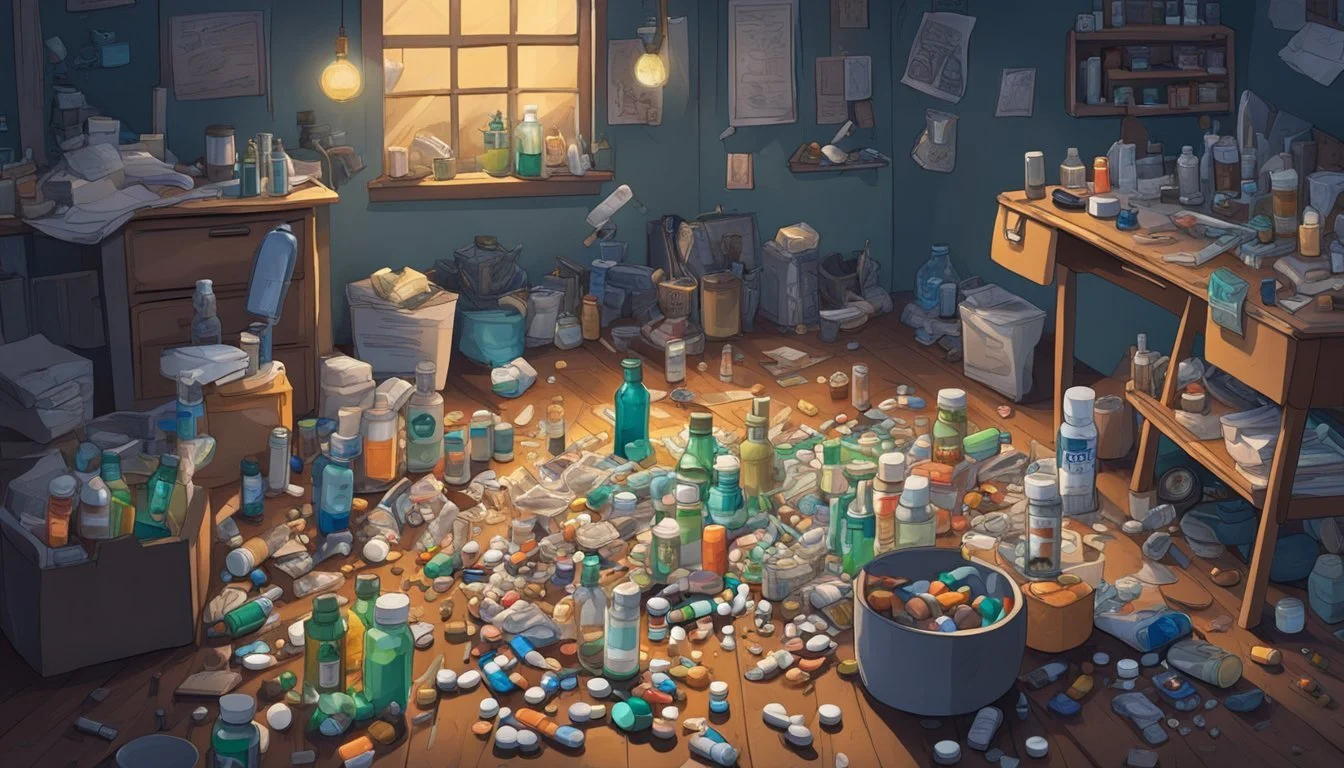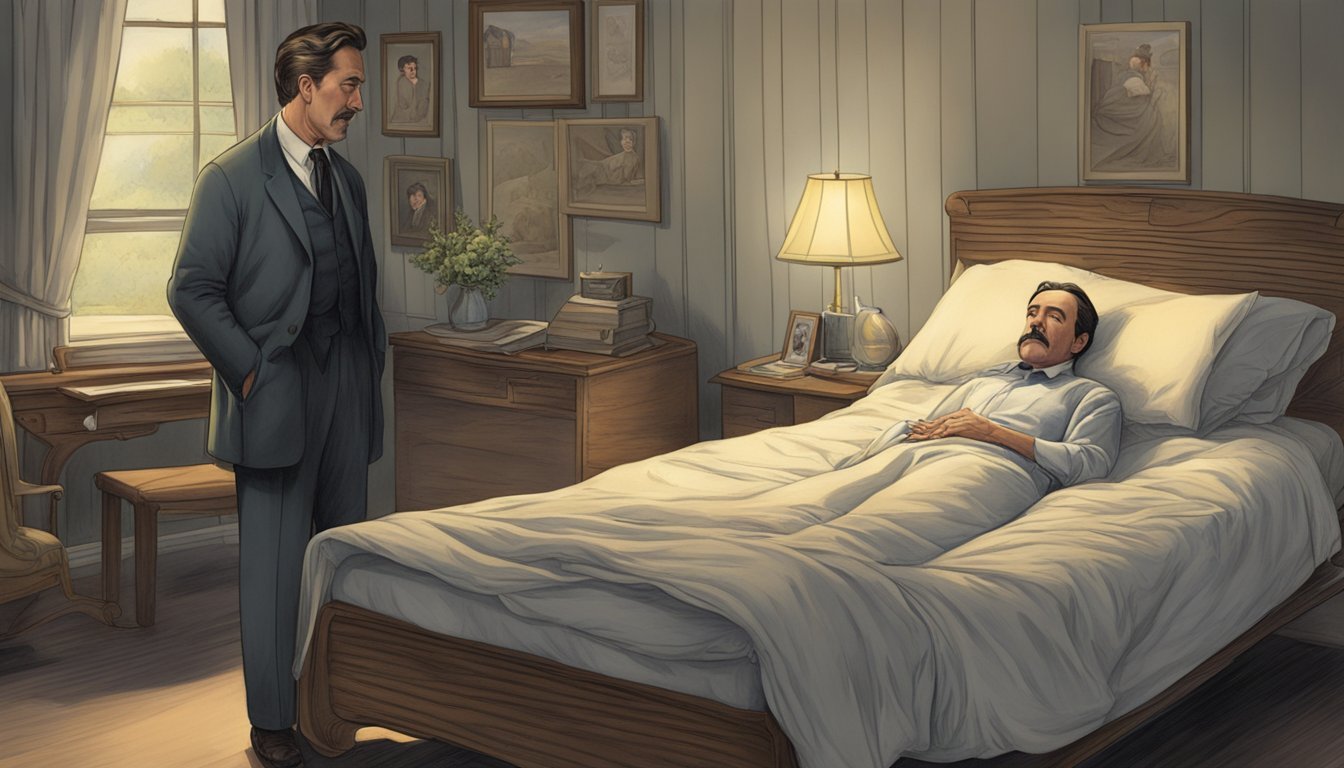6 Breaking Bad Scenes That Were Too Disturbing to Watch
Unforgettable Moments of Intense Drama
Breaking Bad captivated audiences with its intense storytelling and complex characters. The critically acclaimed series pushed boundaries and often ventured into dark, unsettling territory.
Among the show's many memorable moments, certain scenes stood out for their deeply disturbing nature. These sequences challenged viewers' comfort levels and left lasting impressions. From graphic violence to psychological horror, Breaking Bad's most unsettling scenes showcased the series' ability to shock and unnerve its audience.
1) Walter's Confession Tape
Walter White's confession tape stands out as one of Breaking Bad's most unsettling moments. In this scene, Walt records a video implicating Hank as the mastermind behind his drug empire.
The tape showcases Walt's manipulative genius and willingness to destroy his own family. He delivers a chillingly convincing performance, weaving truth and lies into a damning narrative against Hank.
Bryan Cranston's acting reaches new heights as he portrays Walt's feigned vulnerability and remorse. His calculated pauses and trembling voice create an air of authenticity that makes the confession even more disturbing.
The scene's power lies in its stark contrast to Walt's earlier, genuine confession attempt in the pilot episode. It demonstrates how far he has fallen morally and how skilled he has become at deception.
This fabricated confession serves as a turning point, escalating the conflict between Walt and Hank to new levels. It leaves viewers shocked at Walt's capacity for evil and manipulation, making it a truly unforgettable and disturbing moment in the series.
2) Gus Fring's End
Gus Fring's death scene in Breaking Bad stands out as one of the most shocking moments in the series. The explosion orchestrated by Walter White and Hector Salamanca led to a gruesome outcome for the drug lord.
After the blast, Gus emerged from the room, seemingly unscathed. He calmly adjusted his tie, maintaining his characteristic composure. This brief moment of normalcy quickly gave way to horror.
As Gus turned, viewers saw that half of his face had been completely blown off. The visual effects team created a disturbingly realistic depiction of the damage. Despite the severe injury, Gus remained standing for several seconds before collapsing.
This scene pushed the boundaries of what audiences expected from the show. It combined elements of gritty realism with an almost surreal quality. The juxtaposition of Gus's calm demeanor and his catastrophic injuries made the moment even more unsettling.
While some viewers found the scene excessive, others praised its boldness. It served as a defining moment for the series, showcasing its willingness to shock and disturb its audience.
3) Jane's Overdose
Jane's overdose scene in Breaking Bad ranks among the show's most disturbing moments. It occurs in the Season 2 episode "Phoenix" and marks a pivotal turning point for Walter White's character.
The scene depicts Jesse's girlfriend Jane choking on her own vomit after a heroin binge. Walt enters Jesse's apartment and discovers Jane in distress, but makes the shocking decision not to intervene.
Bryan Cranston's performance as Walt conveys the character's internal struggle and ultimate choice to let Jane die. The camera focuses on Walt's face, showing his conflicted emotions as he watches the young woman's life slip away.
This scene is particularly unsettling due to its realistic portrayal of a drug overdose. It doesn't shy away from the grim reality of addiction and its consequences.
Jane's death has far-reaching impacts on the plot and characters. It deepens Jesse's spiral into drug addiction and grief, while pushing Walt further down his path of moral compromise.
The aftermath, showing Jane's father discovering her body, adds another layer of emotional weight to this already devastating scene.
4) Todd's Prison Massacre
Todd Alquist's orchestration of a coordinated prison massacre stands out as one of Breaking Bad's most chilling scenes. The sequence unfolds with brutal efficiency, showcasing Todd's cold-blooded nature and the far-reaching influence of Walt's criminal empire.
In just two minutes, Todd's associates systematically eliminate ten inmates across three different prisons. The violence is swift and merciless, with victims stabbed repeatedly in their cells and common areas.
The scene's impact is heightened by its clinical execution and lack of dramatic music. Instead, the sounds of struggle and muffled screams create a haunting atmosphere that lingers long after the scene ends.
This massacre serves as a turning point in the series, demonstrating the lengths Walt is willing to go to protect his interests. It also cements Todd's reputation as a ruthless enforcer, capable of carrying out large-scale acts of violence without hesitation.
The prison killings shock viewers with their brutality and systematic nature, leaving a lasting impression of the dark depths the characters have reached in their pursuit of power and control.
5) Walt Watches Jane Die
In Season 2 of Breaking Bad, Walt's decision to let Jane die marks a pivotal moment in the series. The scene unfolds as Walt enters Jesse's apartment, finding both Jesse and Jane unconscious from a heroin overdose.
Walt initially attempts to wake Jesse, but hesitates when he sees Jane choking on her own vomit. Instead of intervening, he stands by and watches as she struggles to breathe.
This moment represents a significant moral turning point for Walt. By choosing inaction, he effectively seals Jane's fate and further manipulates Jesse's life.
The scene is particularly disturbing due to its intimate nature and the weight of Walt's choice. Viewers witness a man deliberately allowing another person to die, showcasing the depths of Walt's transformation.
Bryan Cranston's performance adds to the scene's impact, conveying Walt's internal conflict through subtle facial expressions and body language. The silence and tension make the moment even more haunting.
This scene exemplifies Breaking Bad's ability to create profound discomfort while exploring the darker aspects of human nature. It remains one of the most memorable and unsettling moments in the series.
6) Skyler's Intervention
Skyler White's intervention scene in Breaking Bad stands out as one of the most uncomfortable moments in the series. The tension is palpable as family and friends gather to confront Walt about his cancer diagnosis and treatment options.
The scene unfolds in the White family living room, with Skyler, Marie, Hank, and Walter Jr. attempting to persuade Walt to undergo chemotherapy. Walt's stubbornness and reluctance to accept help create an atmosphere of frustration and despair.
As the intervention progresses, emotions run high. Skyler's desperation to save her husband clashes with Walt's desire for autonomy. The raw vulnerability displayed by Anna Gunn's performance as Skyler adds to the scene's unsettling nature.
The situation takes an unexpected turn when Hank suggests using a "talking pillow" to facilitate communication. This seemingly well-intentioned idea only serves to heighten the awkwardness and tension in the room.
Viewers witness the breakdown of family dynamics as Walt's secret motivations remain hidden from those closest to him. The scene serves as a pivotal moment, highlighting the growing disconnect between Walt and his loved ones.
The Impact of Disturbing Scenes
Breaking Bad's most unsettling moments left lasting impressions on viewers. These scenes shaped characters' development and drove the narrative forward in powerful ways.
Emotional and Psychological Effects
Disturbing scenes in Breaking Bad often evoked strong visceral reactions from audiences. Many viewers reported feeling shocked, nauseated, or deeply unsettled by graphic violence or morally reprehensible acts. The infamous bathtub scene with hydrofluoric acid dissolving a body caused widespread revulsion.
Some fans found certain scenes too intense to watch, averting their eyes or fast-forwarding through particularly gruesome moments. The psychological impact could linger long after viewing, with images of Walt's ruthless actions or Jesse's suffering haunting viewers.
These emotionally charged scenes heightened engagement by eliciting empathy, disgust, or moral outrage. They forced audiences to confront uncomfortable truths about human nature and the consequences of choices.
Narrative Significance
Beyond shock value, Breaking Bad's most disturbing moments served crucial storytelling purposes. They marked pivotal character developments, like Walt's transformation into Heisenberg. The violent death of Gus Fring visually represented Walt's triumph over his nemesis.
Unsettling scenes often raised the stakes and ratcheted up tension. Jane's death showed Walt's willingness to let an innocent person die to protect his interests. This decision had far-reaching consequences that propelled the plot forward.
Disturbing imagery also reinforced the show's themes of moral decay and the corrosive effects of power. Scenes like the murder of Drew Sharp highlighted how deeply Walt and Jesse had fallen into darkness.
Cinematic Techniques in Breaking Bad
Breaking Bad's cinematography elevated the show's storytelling through innovative visual and auditory techniques. The series utilized distinct camera angles, lighting, and sound design to immerse viewers in its gritty world.
Use of Visual and Sound Elements
Breaking Bad employed wide aerial shots to provide cosmic perspective, emphasizing the characters' insignificance in the grand scheme. Time-lapse photography showcased the relentless passage of time as events unfolded. The show's creators used unique object perspective shots, placing cameras inside everyday items like washing machines or lab equipment.
These techniques created a sense of detachment, allowing viewers to process intense scenes from a distance. POV shots, though initially praised, became a divisive element as the style was widely emulated. Breaking Bad's visual palette evolved alongside Walter White's moral decay, shifting from warm, sunny tones to darker, more ominous hues.
Role of Music and Silence
Music played a crucial role in Breaking Bad's emotional landscape. The series often employed silence strategically, heightening tension in pivotal moments. When music was used, it ranged from original compositions to carefully selected licensed tracks that enhanced the mood of scenes.
The show's theme song, a short but distinctive tune, set the tone for each episode. Background music often reflected character states, with dissonant sounds accompanying Walt's descent into criminality. In contrast, upbeat or nostalgic tracks sometimes underscored ironically dark scenes, creating a jarring juxtaposition that kept viewers on edge.




